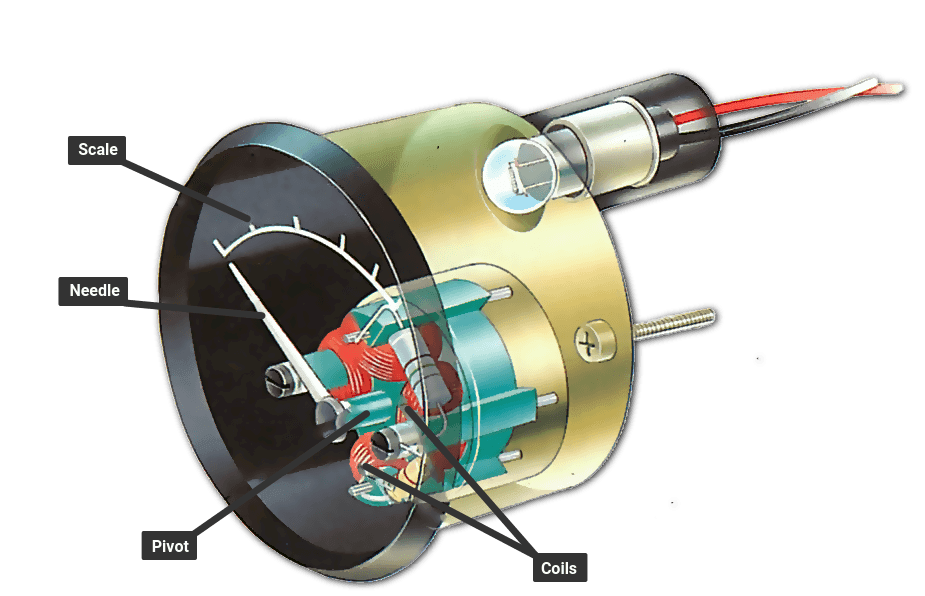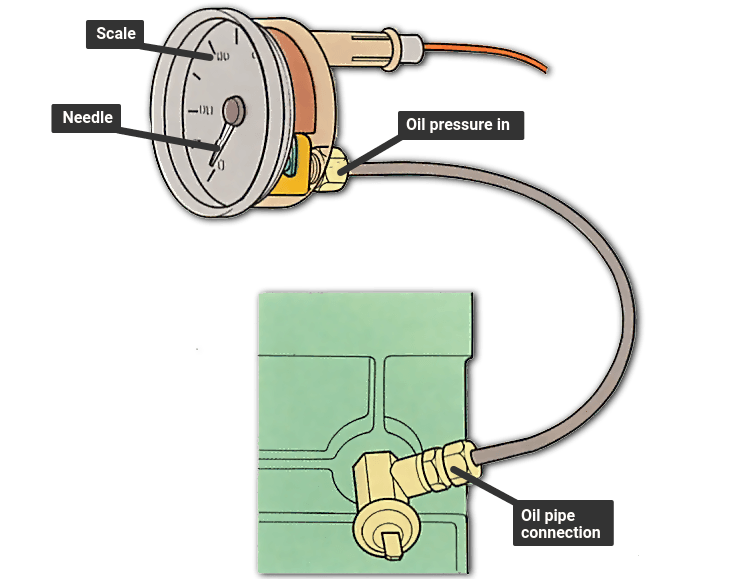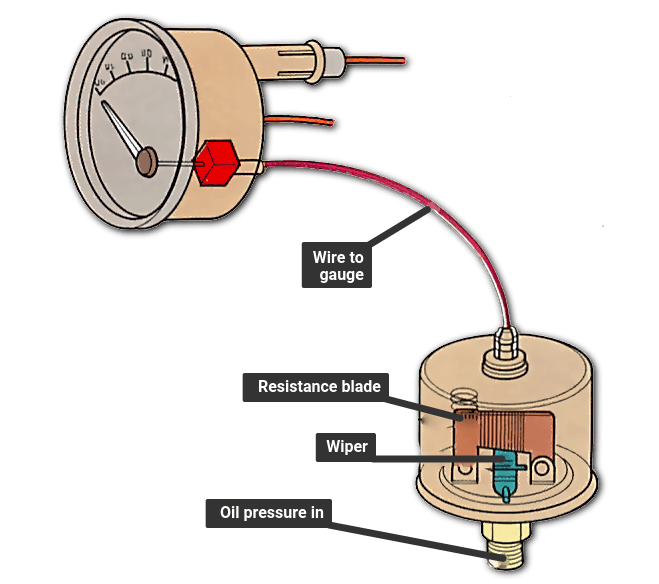How an oil pressure gauge works
The Video Course teaches you everything about modern cars.

The oil pressure gauge is one of the most important instruments in a car. It acts as an indicator of the engine 's overall well-being and as an early-warning system, giving advance notice of any problems so you can investigate the cause before an expensive breakdown occurs.
How oil pressure gauges work
The gauge monitors the oil pressure in one of the main oilways near to the pump and filter . To do this it has a tapping in the engine block , into which is screwed a sensor (for electric gauges) or an oil pipe take-off (for mechanical gauges).
The sensor for the oil warning light is screwed into the union or T-piece at this point, whether or not the car is fitted with an oil pressure gauge.
Mechanical gauges work by literally forcing the needle around the dial under pressure from the engine. Electric gauges, on the other hand, work by using the sensor screwed into the engine block to produce a variable resistance that affects the amount of current passing through the circuit containing the gauge and sensor.
Mechanical gauges

Oil is sent to the gauge from the tapping in the engine's oilway by a small-bore (3mm) pipe, usually copper or plastic. The pipe is routed away from anything that could damage it, because if the pipe is punctured the engine's oil would leak out.
The pipe enters the passenger compartment via a grommetted hole in the bulkhead, and joins the stub on the back of the gauge via a knurled connector.
The gauge contains a flexible coiled tube called a bulb, the open end of which is rigidly mounted to the gauge's outer casing. The other end of the bulb is closed and connected by a lightweight linkage to the bottom end of the needle, which is itself mounted on a pivot.
Oil is fed into the bulb from the supply pipe at very nearly the same pressure as it left the engine. The bulb tries to straighten under the pressure and in doing so moves the needle around the calibrated gauge scale . The greater the pressure, the more the needle moves.
Electric gauges

Electric current is supplied to the gauge from a fused power supply in practice the current is taken from one of the many wires or printed tracks behind the dashboard .
The current passes through a wire-wound coil mounted around or within the needle's pivot and produces a magnetic field that moves the needle across the calibrated scale of the gauge. How far across the scale the needle goes - what reading it gives - depends on how much current flows through the gauge. This in turn depends on the resistance of the gauge's return wire which is earthed to the engine block through the sensor.
The resistance of the sensor depends on the oil pressure. Oil enters the end of the sensor which is screwed into the engine block and pushes against a diaphragm . The diaphragm moves a wiper inside the sensor which runs up or down a blade of known resistance this blade is connected to the return wire from the gauge. The more the diaphragm moves under pressure, the further down the resistance blade the wiper moves. So the resistance of the sensor varies with oil pressure and moves the needle of the gauge accordingly.
All gauges are illuminated so that they can be read at night. Integral gauges are lit from one of the panel lights which also illuminate the rest of the instruments, while separate gauges have a small (0.5 to 3 watt ) bulb mounted in a holder at their rear. All these lights are usually connected into the side/panel light circuit.
Pros and cons
Electric gauges are easier to integrate into the modern one-piece printed circuit instrument panels used in most modern cars, they are less bulky and it's easier to route and connect a wire than a pipe.
Mechanical gauges are not as common as electric ones, although they are still available in accessory shops. Because the oil arriving at the back of the gauge is at engine pressure, you have the problem of messy leaks if the pipe comes undone. However, some people find a mechanical gauge more trustworthy.
Oil warning lights
Many cars do not have an oil pressure gauge fitted as standard, but because some indication of low oil pressure (especially zero reading) is so important, they will at least have a red or orange warning light that shines if the oil pressure drops below a certain level.
Often this warning light will be connected to an oil-level sensor as well, and in some cars the light doubles as an engine temperature warning light.
The Ultimate Car Mechanics video course
Learn everything about modern cars from our new video series.
Learn more >-
We build a Mazda MX5 Miata from scratch
We start by tearing down and then rebuilding the whole car.
-
Every part explained
There's ridiculous detail on every part. Clearly and easily explained.
-
All modeled in 3D
We've created the most detailed 3D model ever produced so we can show you everything working.






